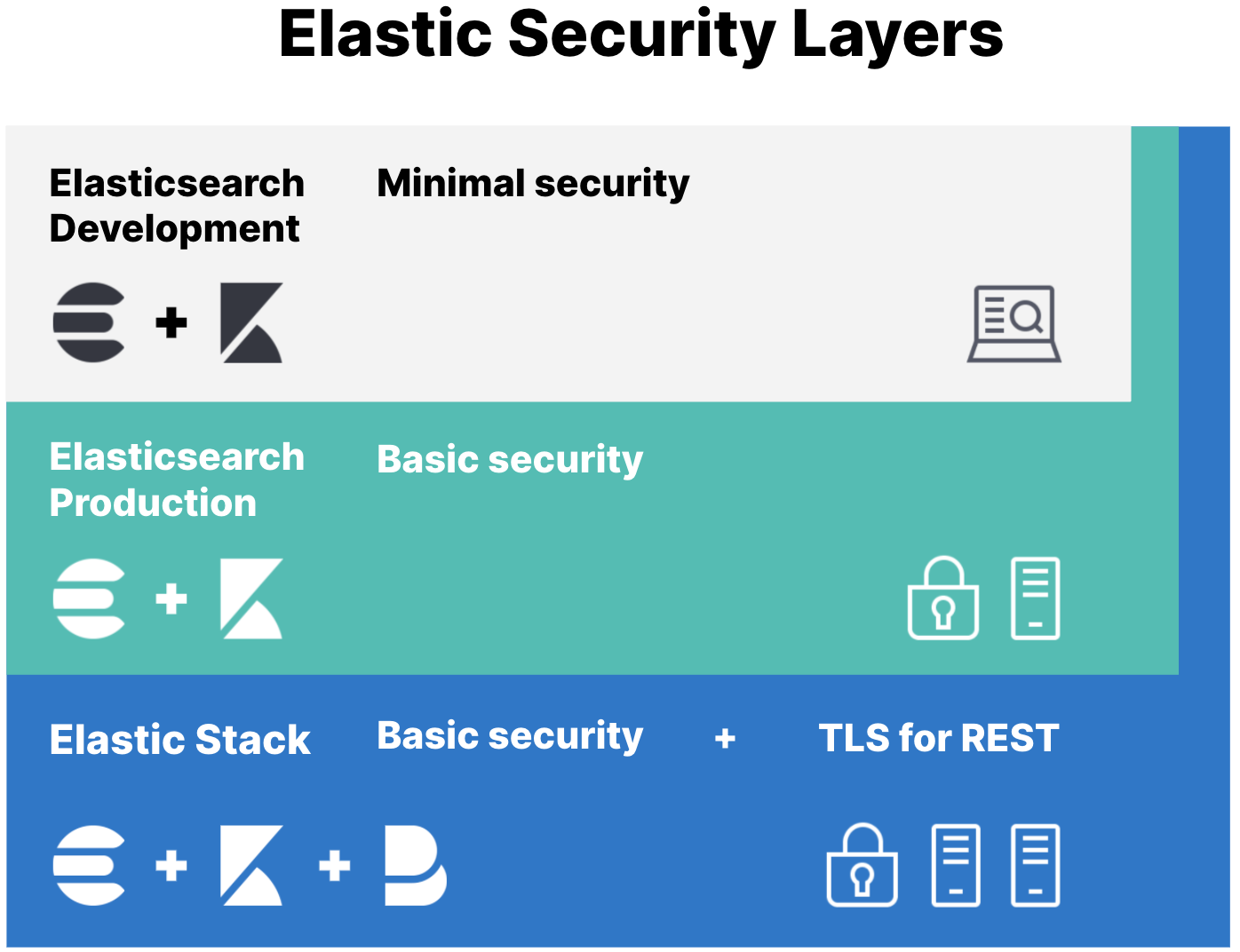Configure security for the Elastic Stack
editConfigure security for the Elastic Stack
editSecurity needs vary depending on whether you’re developing locally on your laptop or securing all communications in a production environment. Because security needs vary, the following scenarios provide options for configuring the Elastic Stack.
Each subsequent scenario builds on the previous one so that you can add additional security by building on the existing layer.
These scenarios don’t cover every situation, but provide a framework for securing Elasticsearch and the Elastic Stack based on typical use cases.

Minimal security (Elasticsearch Development)
editIf you want to set up Elasticsearch on your laptop and start developing, this scenario is for you. This configuration prevents unauthorized access to your local cluster by setting up passwords for the built-in users. You also configure password authentication for Kibana.
The minimal security scenario is not sufficient for production mode clusters. If your cluster has multiple nodes, you must enable minimal security and then configure Transport Layer Security (TLS) between nodes.
Basic security (Elasticsearch Production)
editThis scenario builds on the minimal security requirements by adding transport Layer Security (TLS) for communication between nodes. This additional layer requires that nodes verify security certificates, which prevents unauthorized nodes from joining your Elasticsearch cluster.
Your external HTTP traffic between Elasticsearch and Kibana won’t be encrypted, but internode communication will be secured.
Basic security plus secured HTTPS traffic (Elastic Stack)
editThis scenario builds on the one for basic security and secures all HTTP traffic with TLS. In addition to configuring TLS on the transport interface of your Elasticsearch cluster, you configure TLS on the HTTP interface for both Elasticsearch and Kibana.
If you need mutual (bidirectional) TLS on the HTTP layer, then you’ll need to configure mutual authenticated encryption.
You then configure Kibana and Beats to communicate with Elasticsearch using TLS so that all communications are encrypted. This level of security is strong, and ensures that any communications in and out of your cluster are secure.